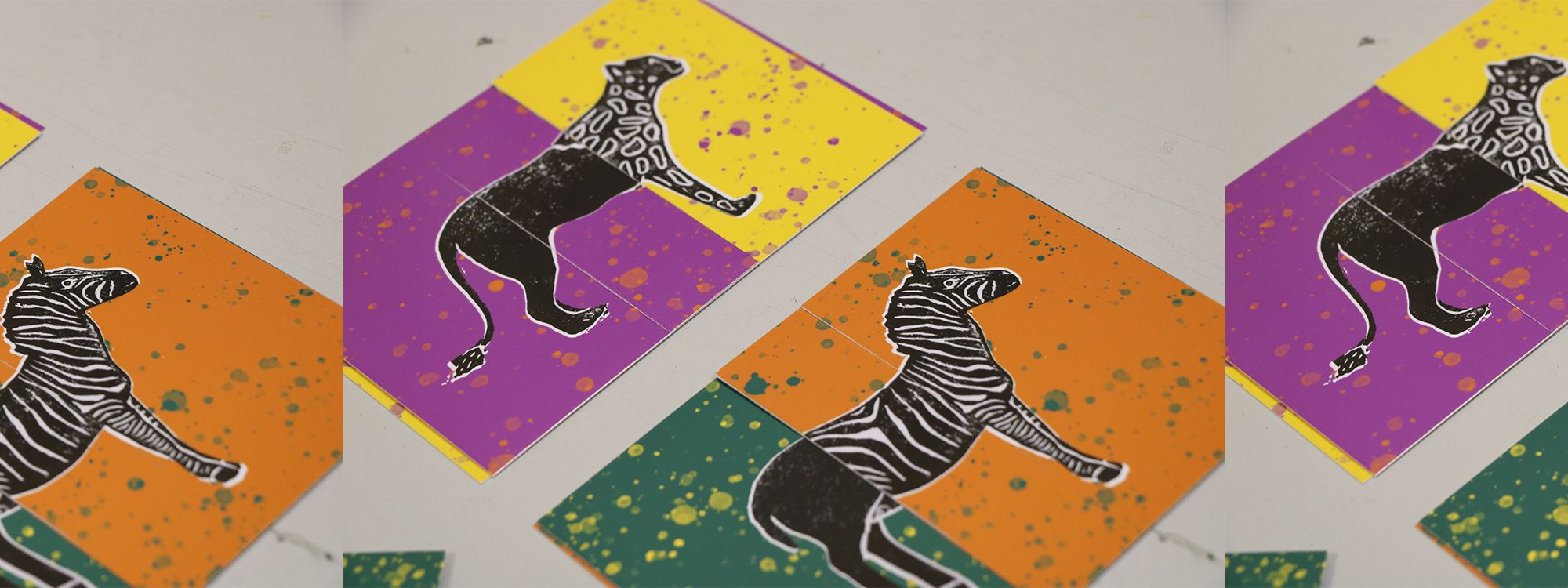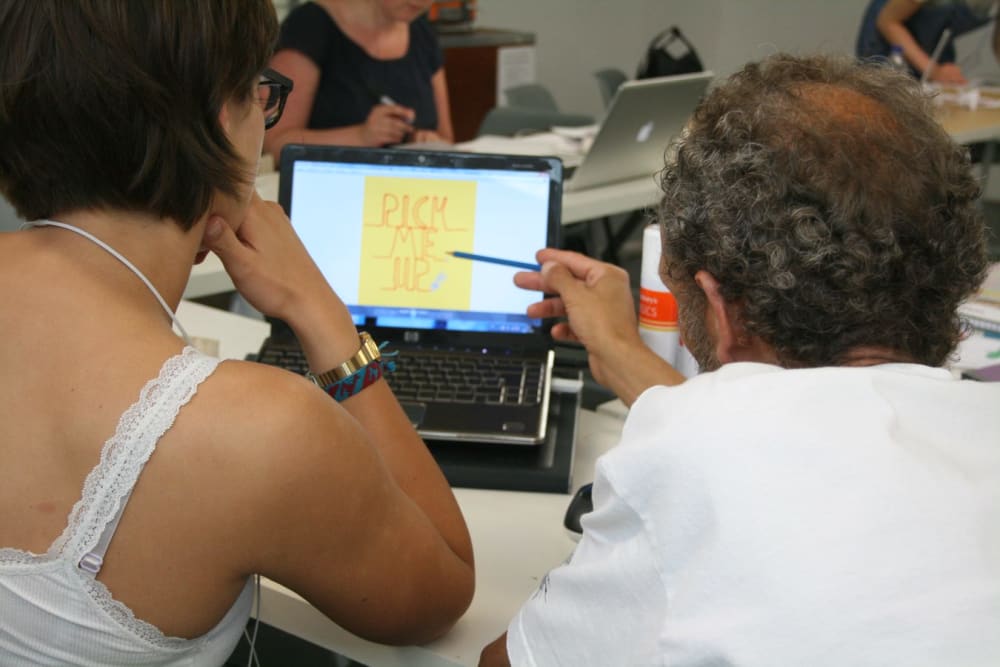
How to create a graphic design portfolio
- Written byMariana Jaureguilorda Beltran
- Published date 23 February 2022
Are you looking to build a knock-out graphic design portfolio? You may be planning to apply to BA, MA or looking to develop your professional portfolio as a ticket to professional success.
A graphic design portfolio is the visual representation of all you have accomplished so far and symbolises what you hope to achieve in the future.
Competition is fierce – you need to stand out. To push your portfolio to the front, it helps to know what to include and what to leave out. Graphic designer and communications professional and UAL Short Courses tutor, Rachel Kirk, gave us some insights into how to build a solid graphic design portfolio.
Curate your best work
When considering what to include in your graphic design portfolio, there is only one answer: your best stuff.
"Think about preparing and curating your portfolio as a design project in itself. It will take time and effort to do a great job and isn't something you should leave until the last minute or rush in any way'. You should ask yourself a number of questions including; which are my best projects and why? Which order should they be viewed in? Which project should be seen first... and last? Which categories or themes of work do I have? What does my work say about me?"
Your work should stand-out and show a wide range of skills and abilities. Bear in mind that not all your work will be exciting – a business card may not be your most exciting work, but it can show your potential range.
A common misconception is that you can only include work that you’ve been paid to do – this is wrong! Any relevant work that showcases your talent should be included!
What should you leave out?
Any projects where you were unhappy with the final product.
Occasionally, you will produce work that is not up to your standards (perhaps a difficult client). This is fine, but when it comes to your portfolio, there’s only room for your best work.
Format is everything
Where you host your portfolio is important – research helps. Whatever option you choose, be sure the page can not only accommodate a highly visual site but that it presents your work in a way that is aesthetically pleasing. A gallery-style page with many small entries could work well for logo designs, but if you’re a photographer your photos need to be full screen to be impactful. Many portfolio websites offer templates and extensions with lightbox galleries made especially for photographers. If you work in a range of styles or formats, break it into digestible mini-portfolios that are easy to navigate and browse.
Tell a story
"Think about preparing and curating your portfolio as a design project in itself. It will take time and effort to do a great job and isn't something you should leave until the last minute or rush in any way'. You should ask yourself a number of questions including; which are my best projects and why? Which order should they be viewed in? which project should be seen first... and last? Which categories or themes of work do I have? What does my work say about me?"
Get social
Remember that your portfolio is only one part of your online presence as a graphic designer. Include your social media handles. Social media can be a great way to build your brand and bring the necessary human element that might convince a client to hire you.
Cultivate social media streams that connect and interact with your portfolio—maybe retweet a web poster you designed for an event or use your Instagram feed to show works in-progress, killed drafts and even mistakes.
It has to be “dynamic”
"Not every project in your folio needs to be polished and fully resolved, your process and your creative journey is as important as the final outcome. Your portfolio should visually communicate; your skills, your process, your personality& your potential."
A portfolio is not a stagnant thing – it’s dynamic, it should evolve as you do. One of the greatest feelings in the world is updating your portfolio, removing the waste and filler, and adding more relevant, updated content. Update it often as your skills improve and your focus changes.
As you gain more experience, update your portfolio to reflect the kind of work you want to do more of. If you truly love designing landing pages and would enjoy designing them every day, make those the cornerstone of your portfolio, billing yourself as the expert, an art director or hiring manager cannot pass up for their next job.
Your portfolio should feel fresh, human, and carefully curated. If executed well, potential clients or employers will receive a strong sense of who you are as a person and as a professional—and your work will truly shine!
If you are feeling inspired, make sure to check-out our Graphic Design short courses in London or Online. We also offer a wide range of unique courses for kids and teens aged 11 to 18 years-old, including within graphic design, who wish to explore their creativity.





